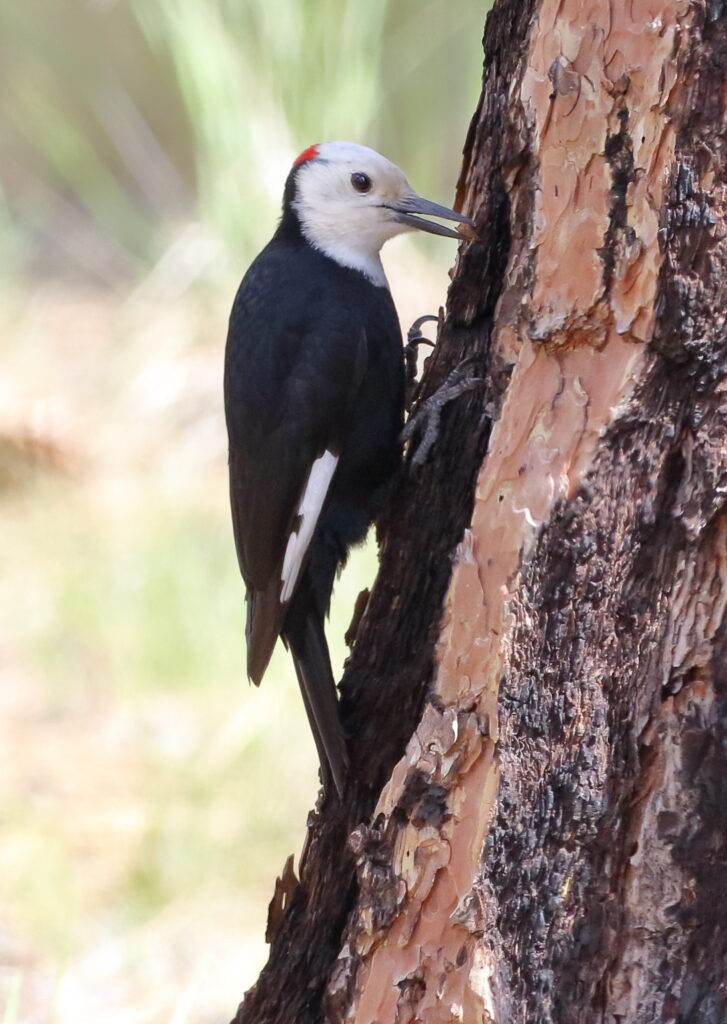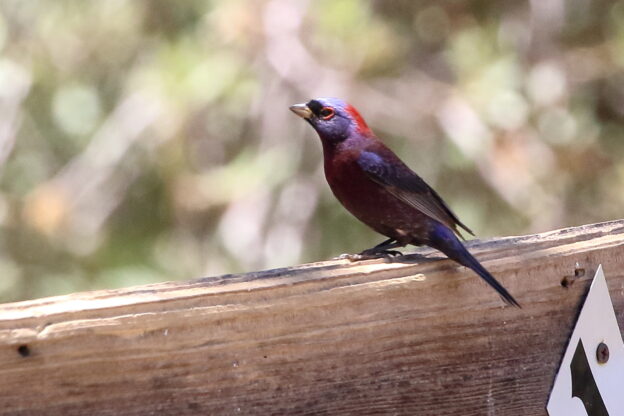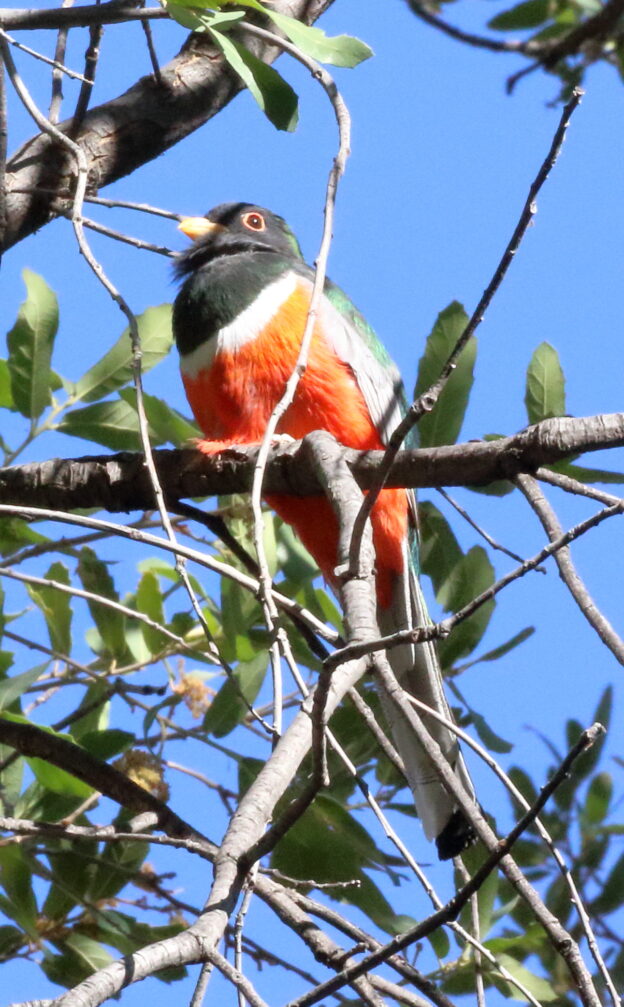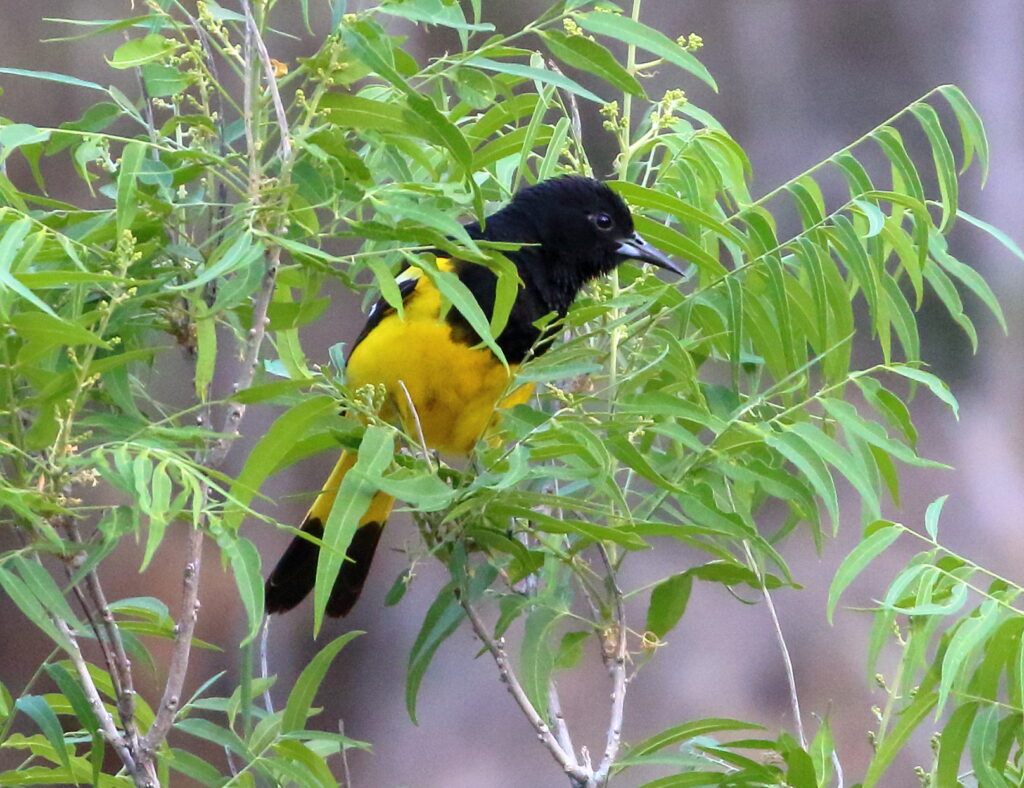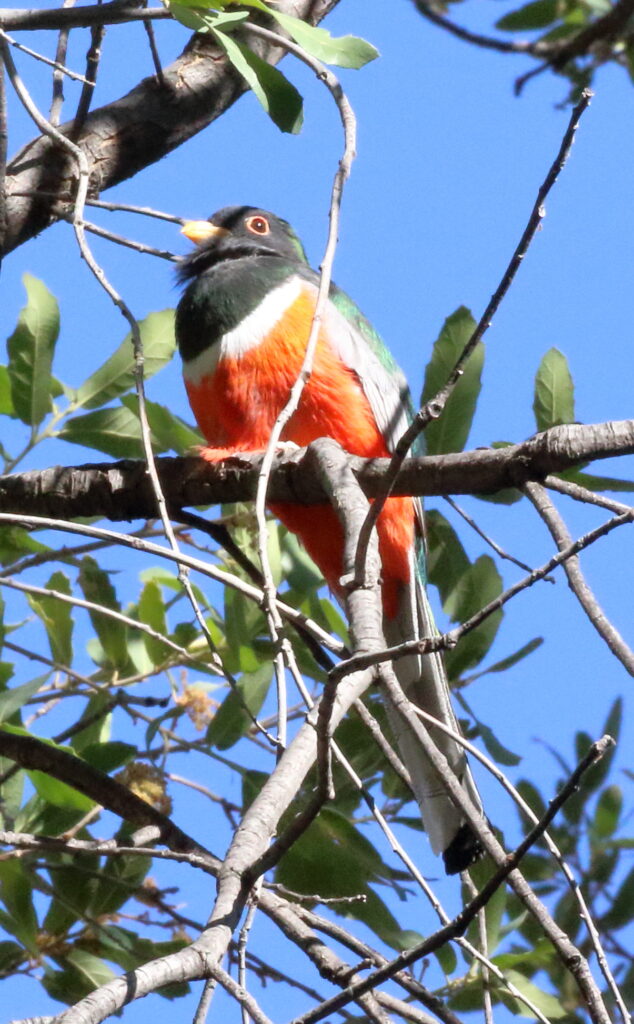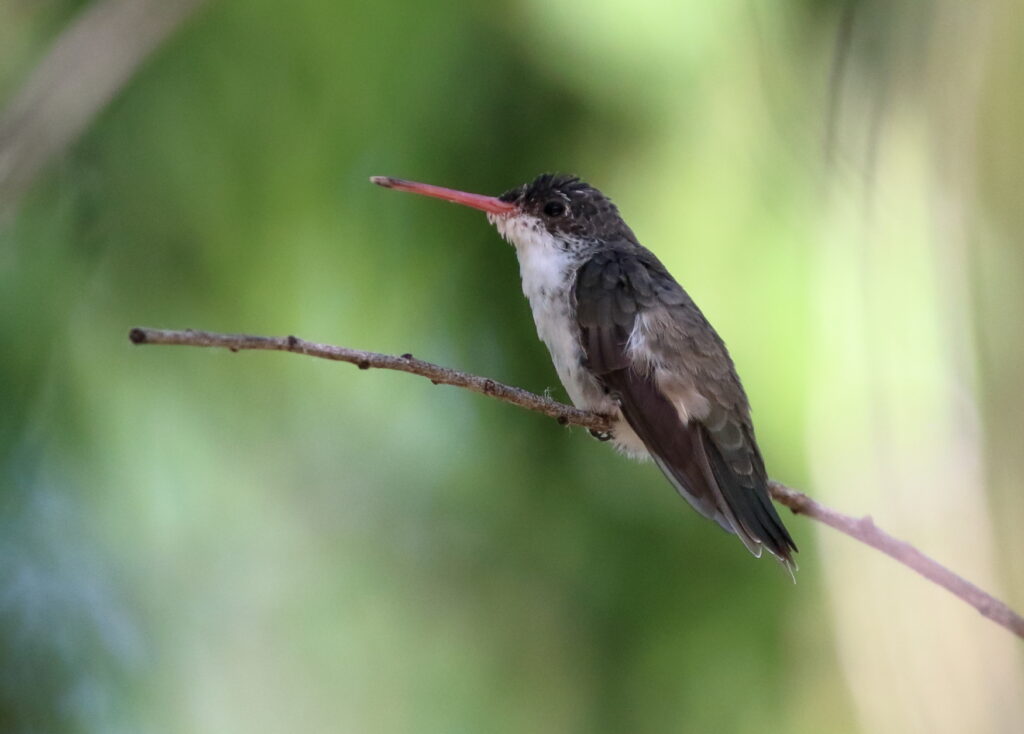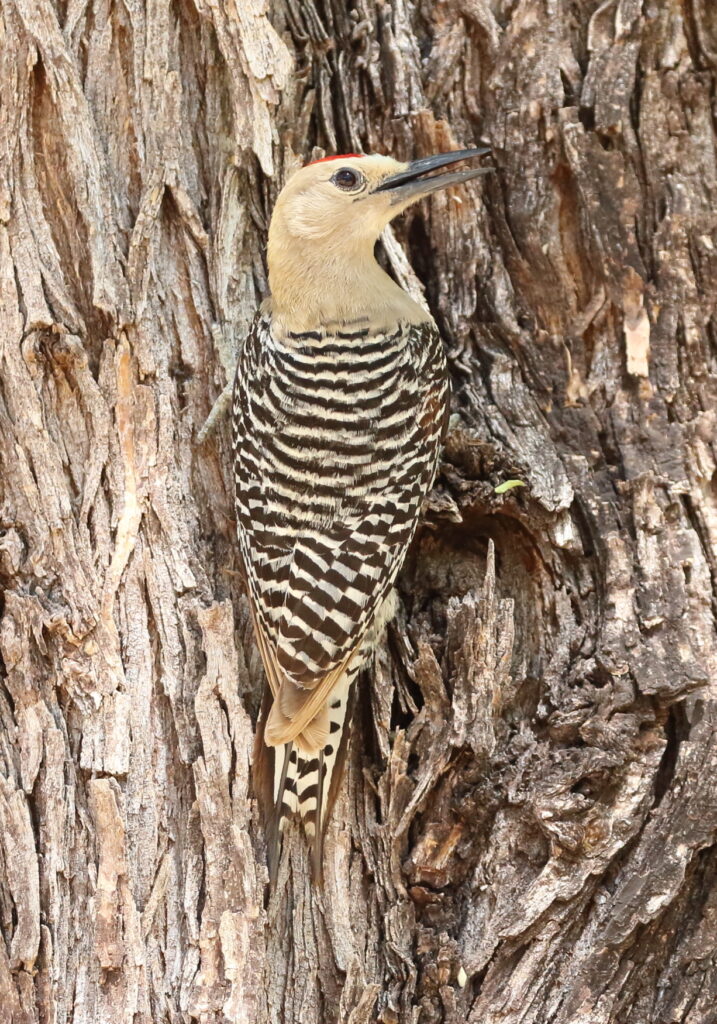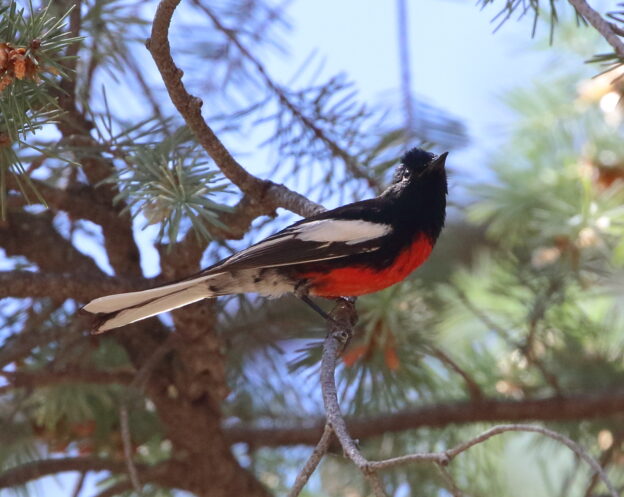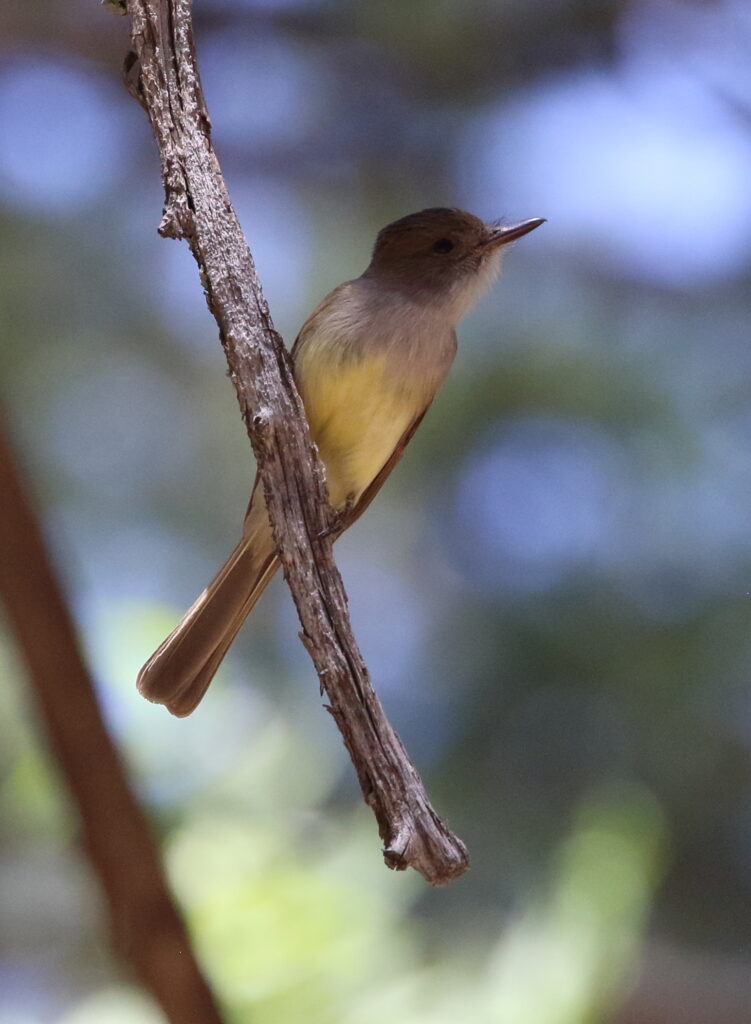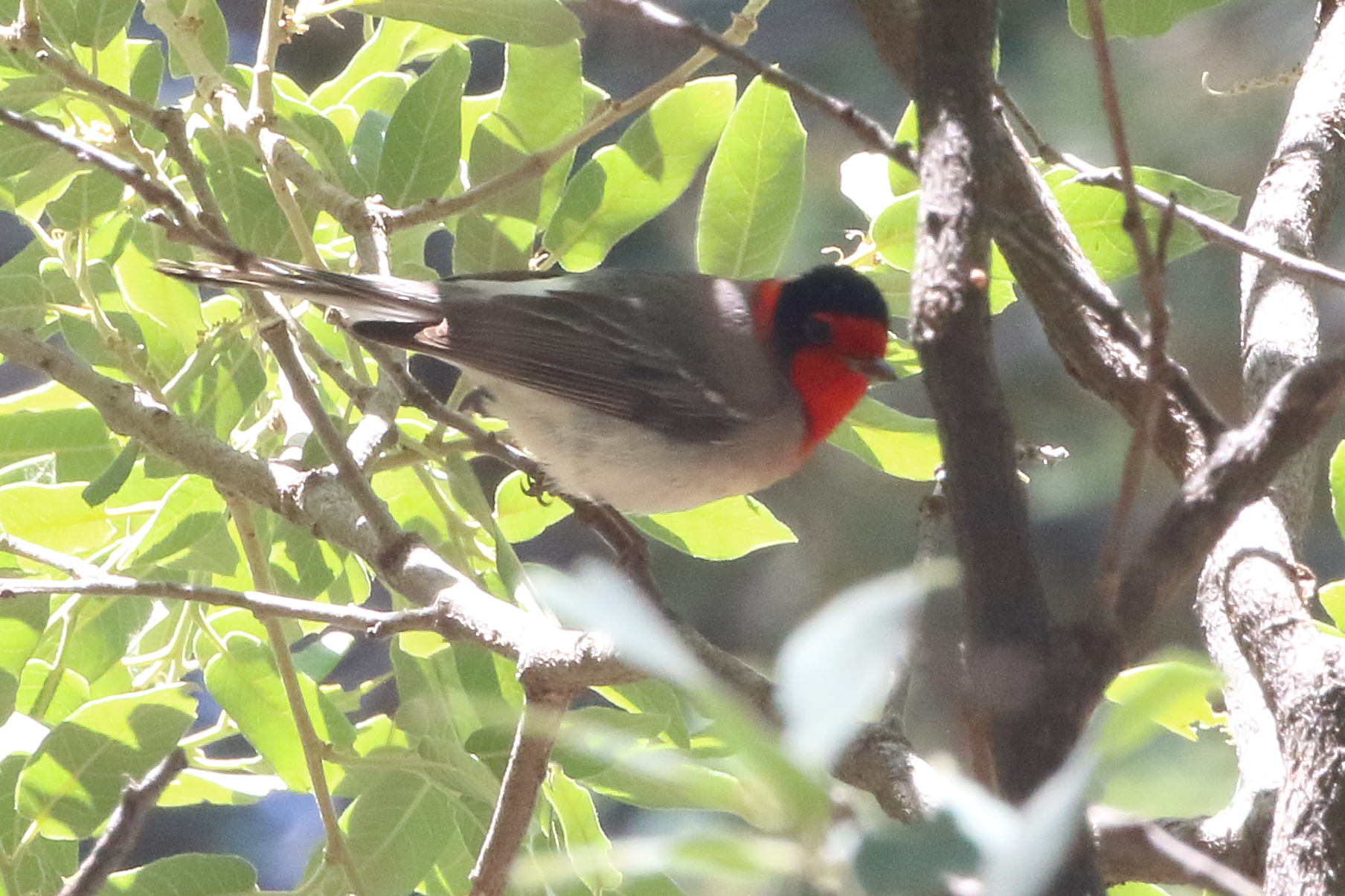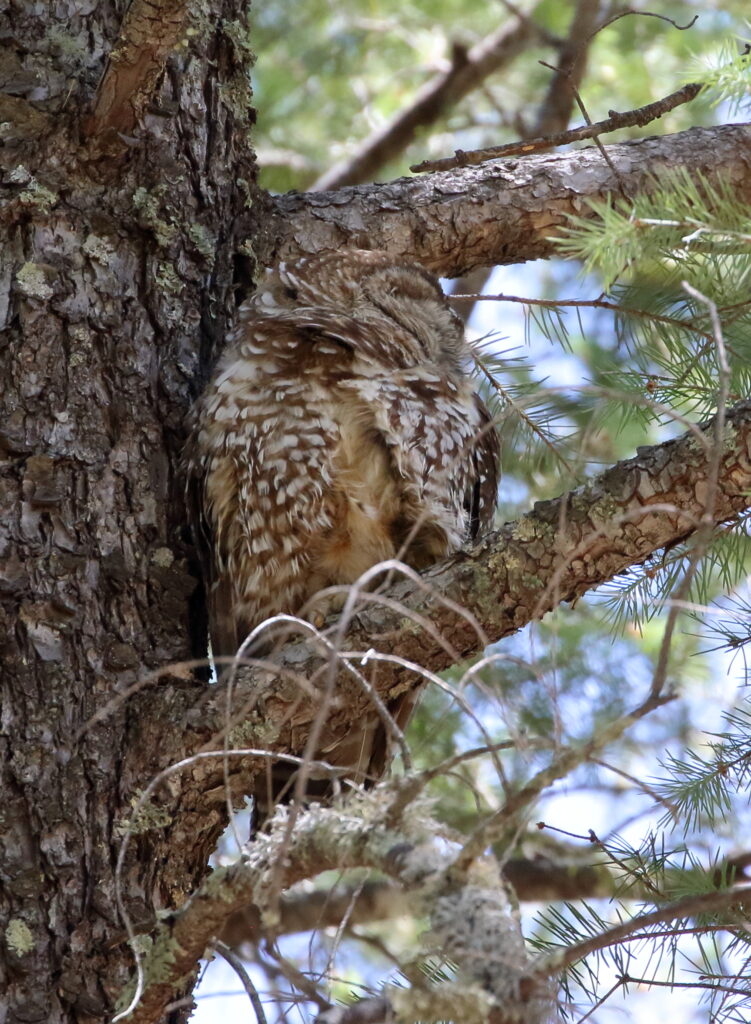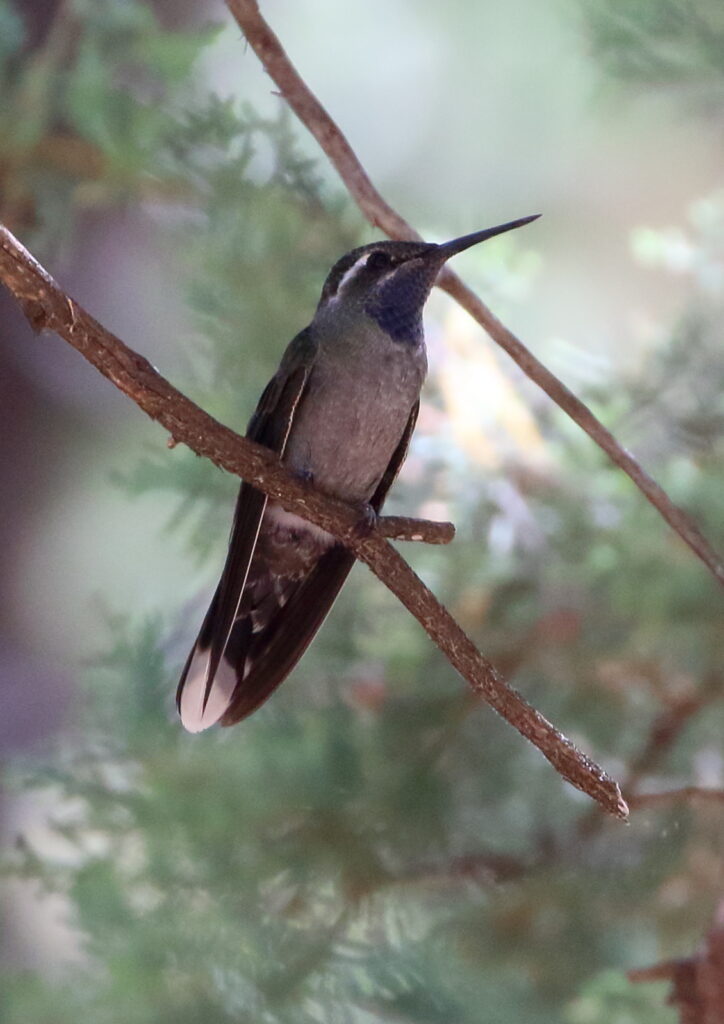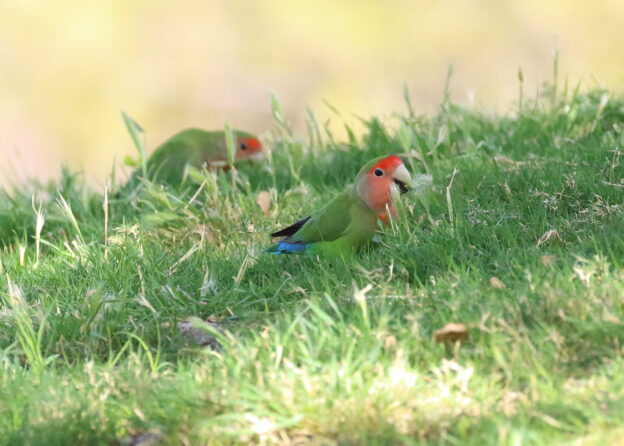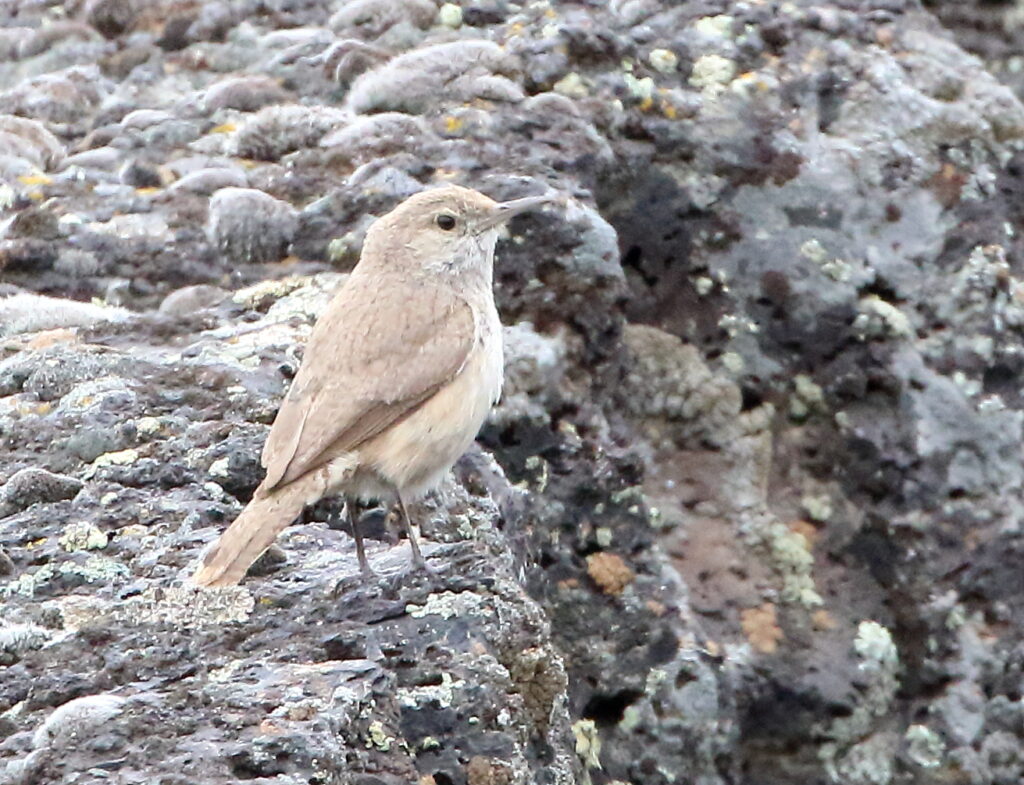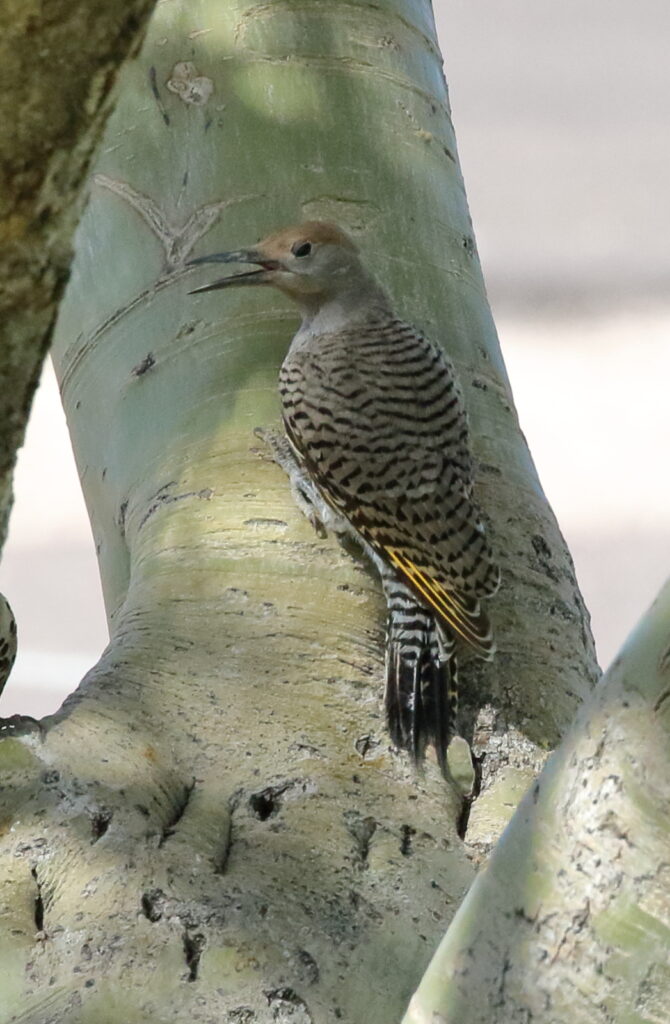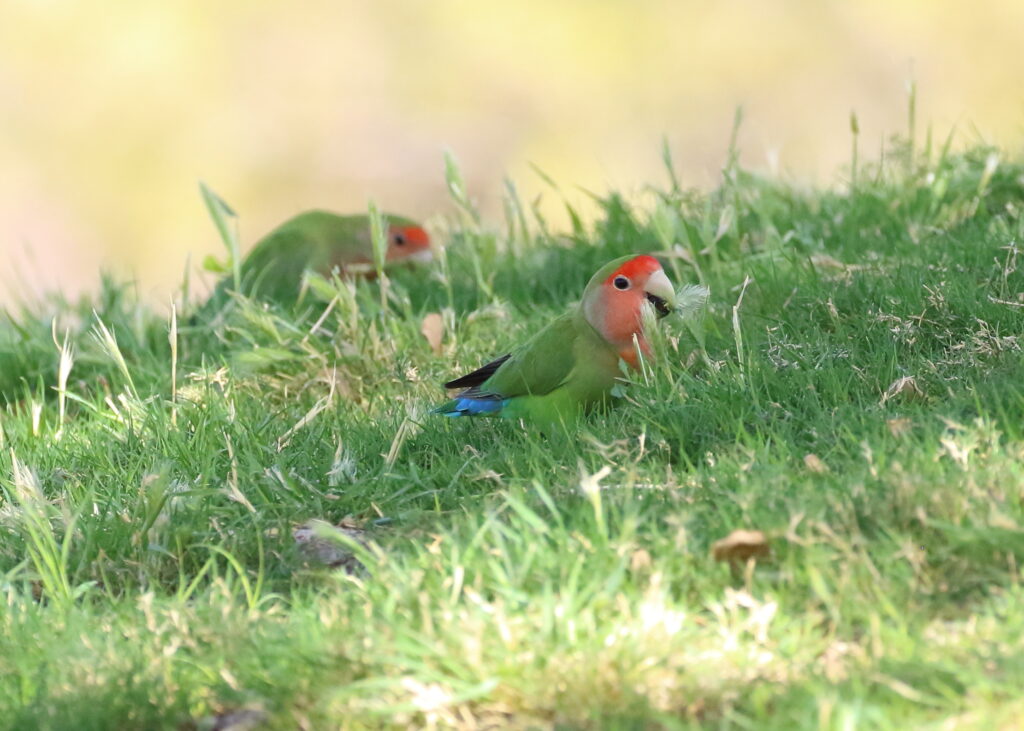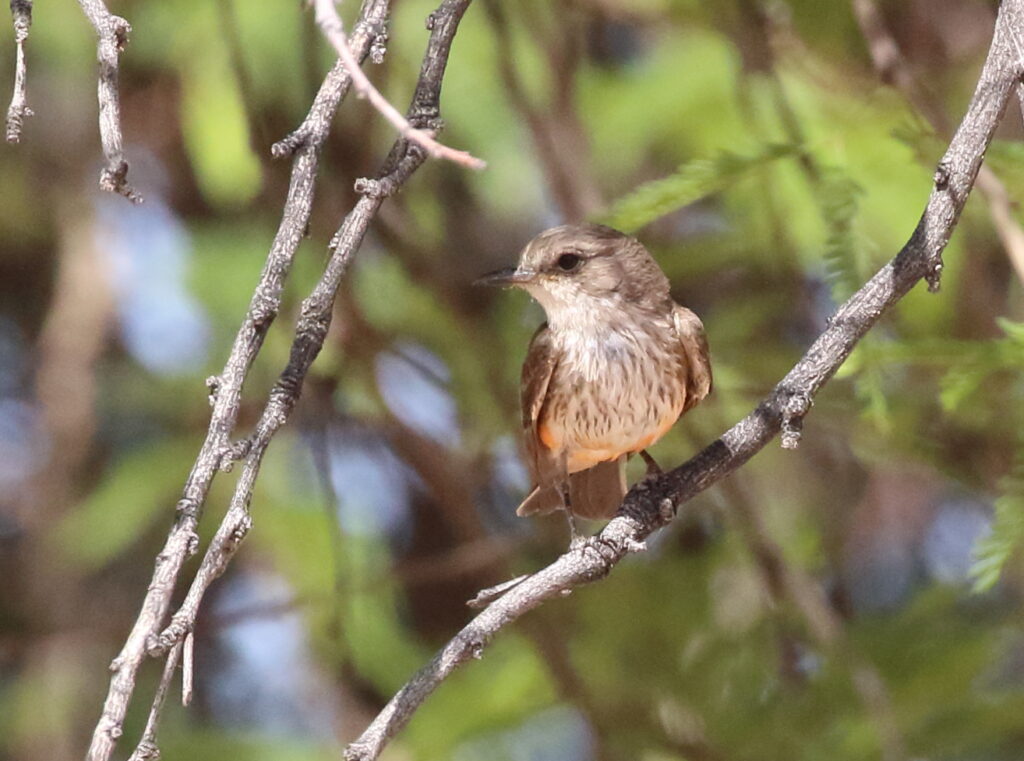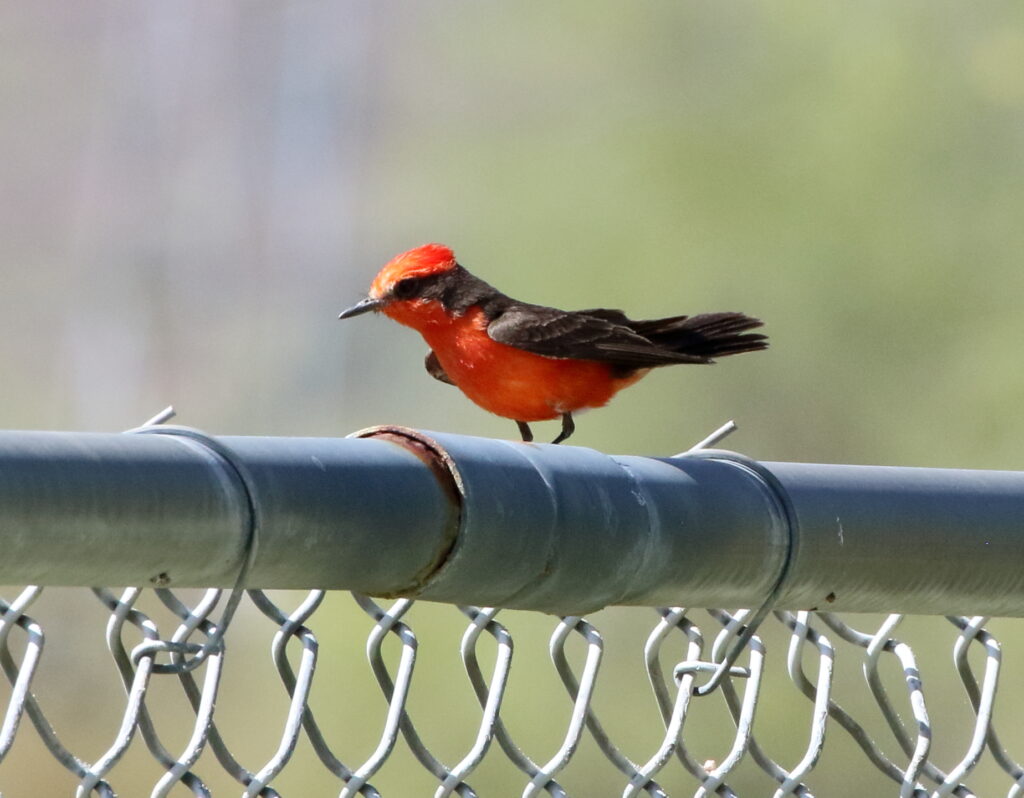This is the last installment of our four-part Arizona adventure. We’ve had a great response to these posts and want to thank you for all of your enthusiasm! Keep birding and supporting birds however you can, and we will share more adventures soon!
We departed our Nogales hotel the next morning to find a gorgeous Vermillion Flycatcher sitting on a bench outside the front door. It boded well for the day as we headed to our first destination, Patagonia Lake State Park, a place featured in the movie The Big Year, though undoubtedly not filmed there. Patagonia indeed upheld its reputation as a great birding spot, and we checked off two more Life Birds—Northern Beardless Tyrannulet and Bell’s Vireo. We also saw Summer Tanagers and got our best experience ever watching Phainopeplas, which sport the ultimate in cool with their silky black suits and blazing red eyes. Alas, we missed Braden’s top target, Varied Bunting—but picked it up at a small rest area just up the road!
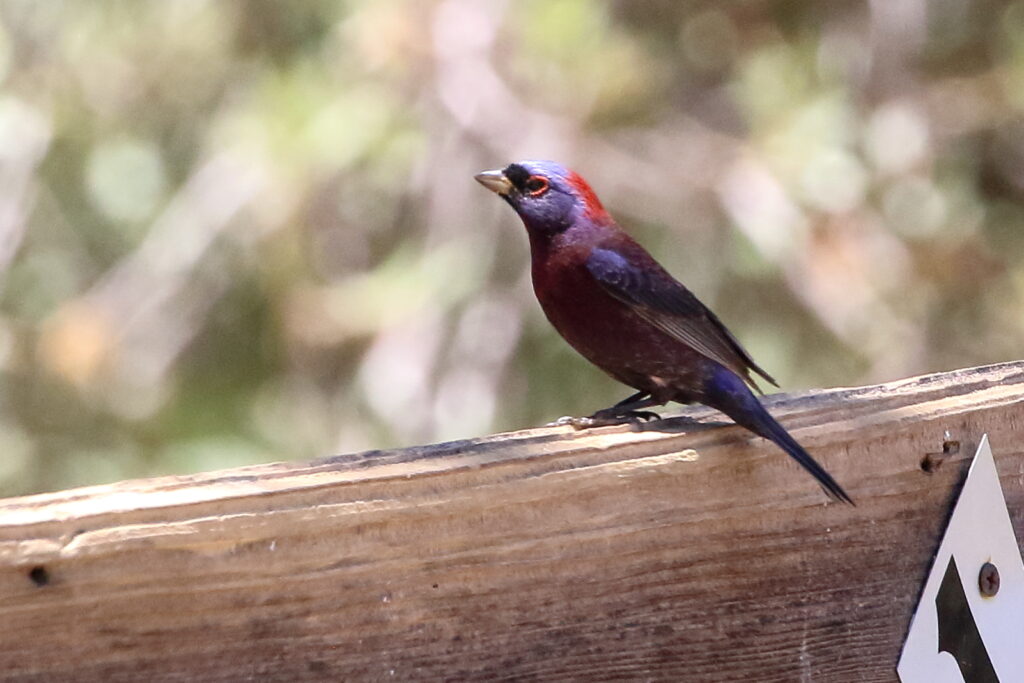
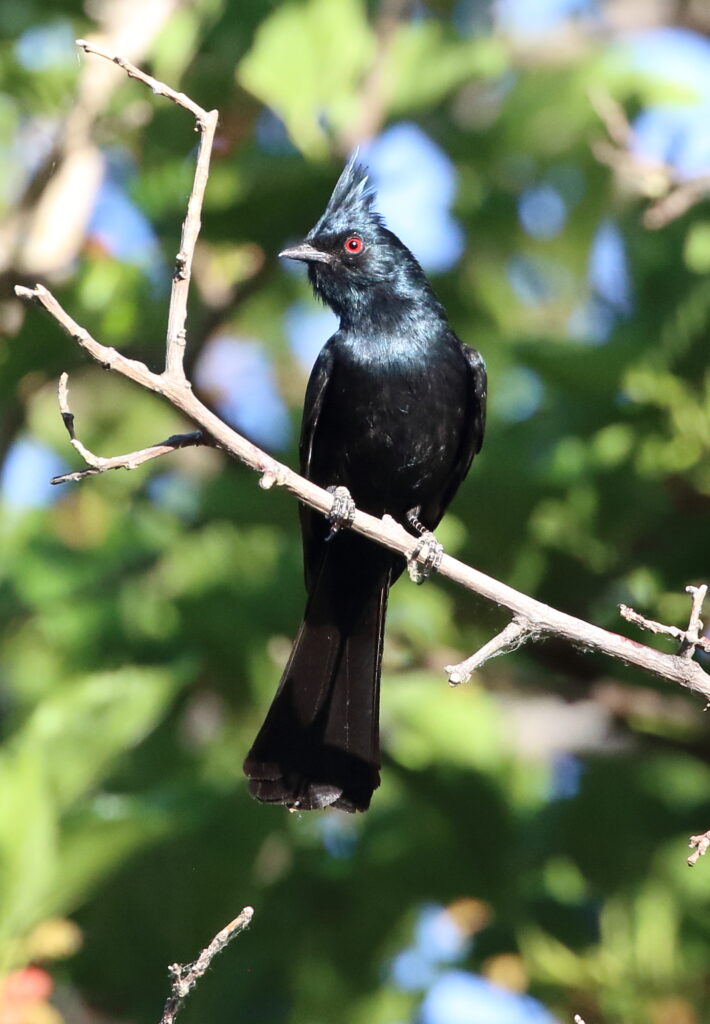
We had debated what to do with the rest of the day and had considered going for Whiskered Screech Owl in the rugged mountains west of Nogales, but with serious heat and the prospect of rough mountain roads to negotiate, we decided for the more comfortable alternative of Madera Canyon, a place we had both adored on our Big Year visit in 2016. We felt grateful for our decision after we staked out a campsite and availed ourselves of the marvelous bird feeders at Santa Rita Lodge. There we picked up Rivoli’s Hummingbird and Arizona Woodpecker for Braden’s Big Year list, and had much better looks at Varied Buntings, Hepatic Tanagers, and more.
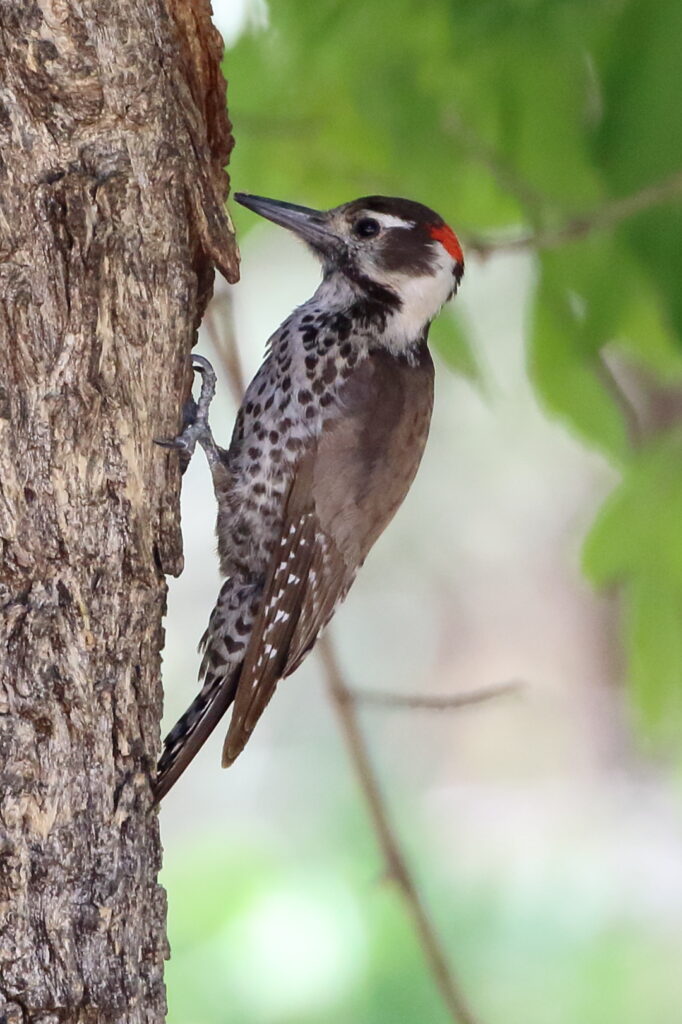
As we were watching a group of Turkey Vultures, I suddenly saw one make a quick move that didn’t look right. “Braden, look at that!” We both got eyes on it and Braden shouted, “Zone-tailed Hawk!” We had seen one before, but had no idea of their close association with Turkey Vultures. In fact, it looked so much like a Turkey Vulture that it left no doubt that some kind of mimicry or convergent evolution had shaped it. Some speculate that potential prey (birds, reptiles, mammals) feel safe with Turkey Vultures overhead—giving a sneaky Zone-tailed a chance for a surprise attack!
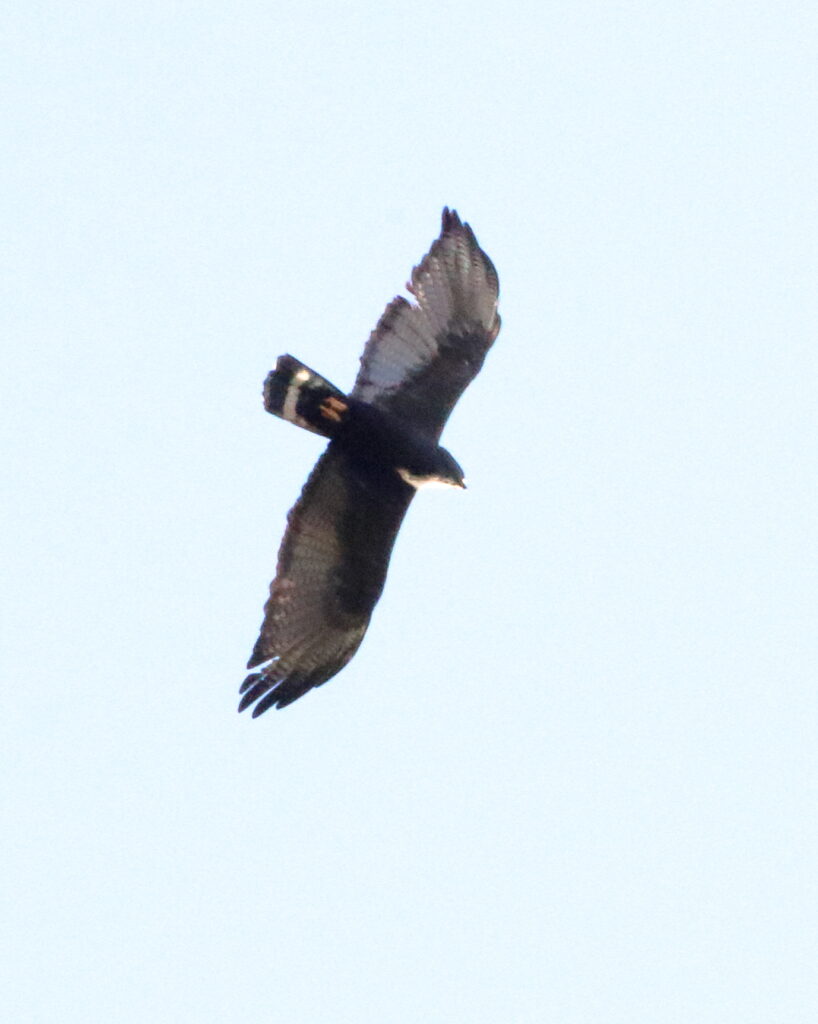
That afternoon we also enjoyed the company of multiple Mexican Jays and Painted Redstarts at our campsite and, later, heard the calls from the same trio of night birds we had enjoyed two nights before in Portal—along with our year’s first Common Poorwills! Oh, and did I mention Braden’s ears also scanned in the calls of Sulphur-bellied Flycatchers and Elegant Trogons? “Again,” Forrest Gump might groan.
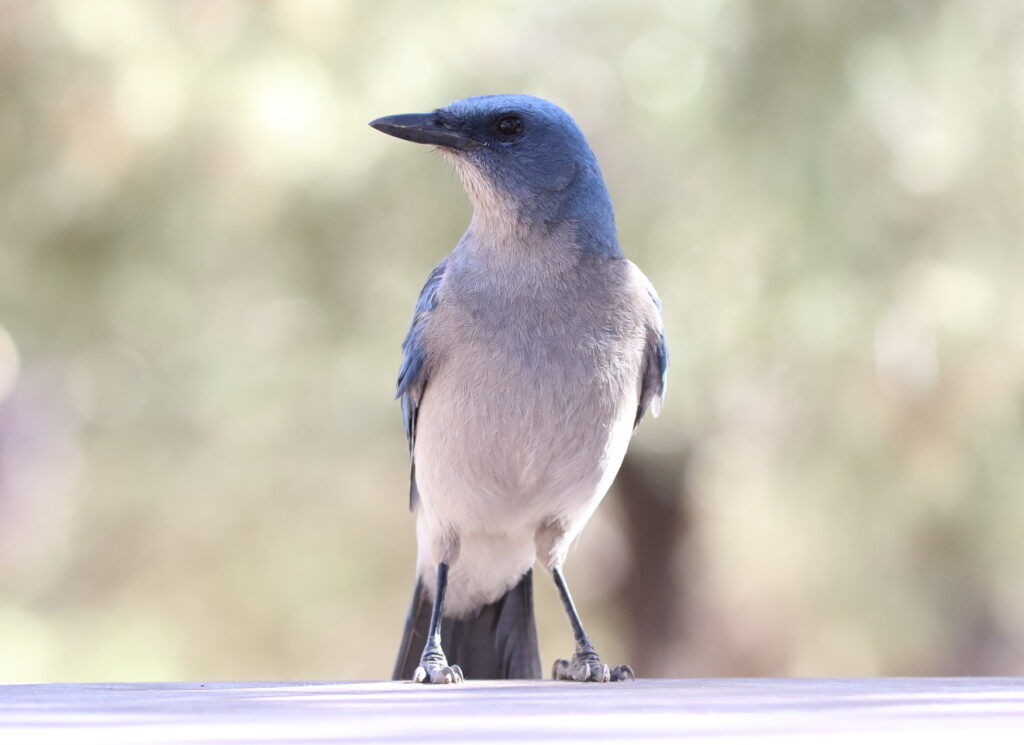
The next morning, before aiming toward California, we had one more task. After rolling up camp, Braden guided us to a place called Montosa Canyon in the same range as Madera. Why? To find a recently-sighted, highly-coveted Five-striped Sparrow. I really didn’t know what our chances might be, but it took about thirty seconds for Braden to locate it, a handsome bird similar to Black-throated Sparrow. As an added bonus, Braden said, “Daddy, look over there.” I focused on a hummingbird and immediately recognized a species I’d read about countless times—a male Costa’s Hummingbird! The Costa’s was superb and we did a little dance, thinking it was Braden’s 400th bird for his Big Year—the goal he had set for himself in January! We later learned, however, that we had inadvertently seen a juvenile Costa’s at Madera the day before, so 400 would have to wait for California Scrub-jay later that afternoon.
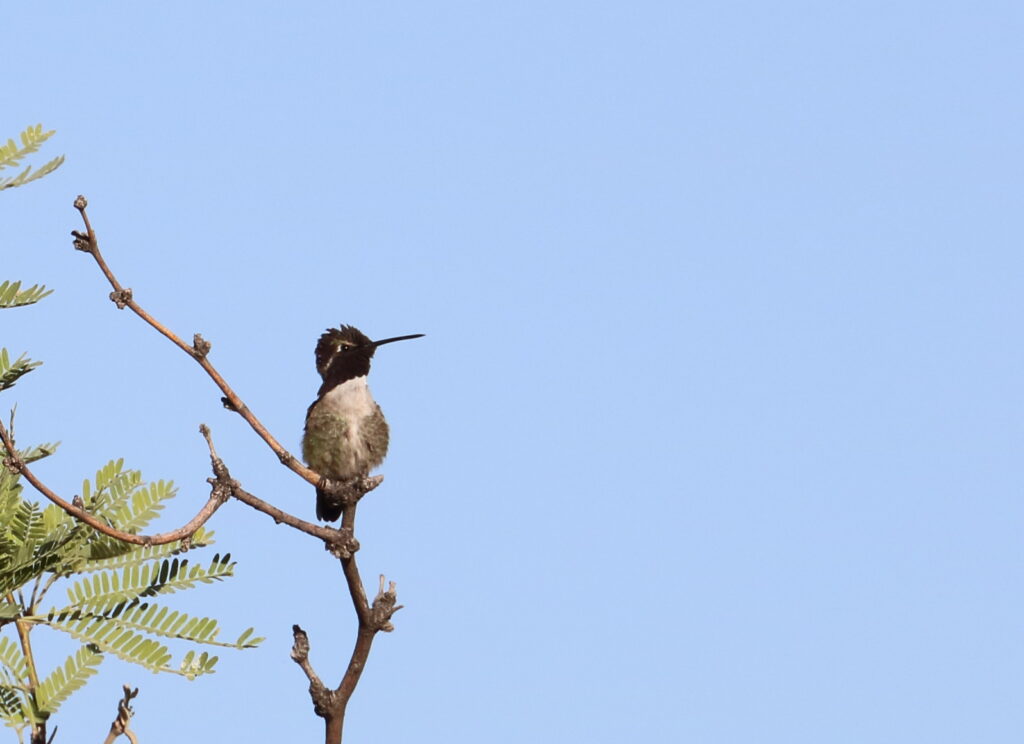
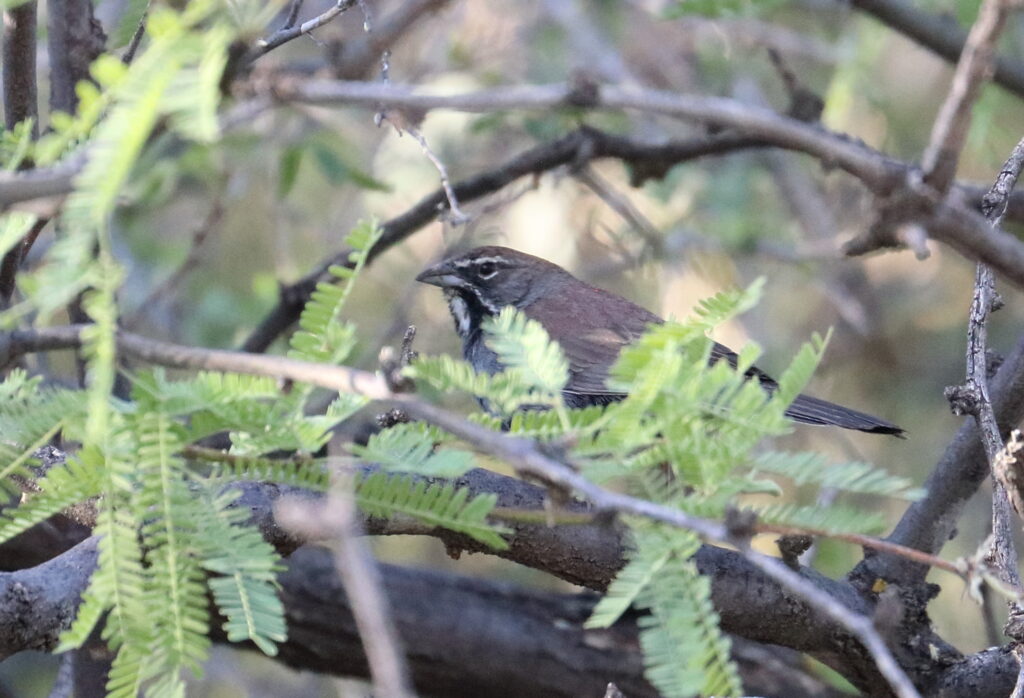
Many more birding adventures would unfold in the coming days as we made our way to San Diego to visit our cousin Laura, and then drove up to the Sierras to deliver Braden to his job monitoring Northern Goshawks for the summer. Sadly, from there I would continue home alone, hitting Modoc National Wildlife Refuge in Alturas and spending a fun three days with my friend and college roommate—not to mention avid reader of FatherSonBirding—yes, you guessed it, Roger Kohn. Roger showed me some of his favorite hotspots around his new home of Bend—and spotted a bird I especially wanted to see, White-headed Woodpecker. He also showed me the delights of Bend’s many brew pubs, but that, unfortunately, concludes this tale. Stay tuned for many more adventures including my recent fabulous birding in Billings and beyond, and Braden’s report(s) from the High Sierras. Who knows, I might even do some more truck birding this summer! Also stay tuned for more progress on Braden’s Big Year. After he hit 400 on our trip, I pushed him to reluctantly lift his target to 450—but between you and me, I think 500 has a much nicer sound to it. Will he go for it? I think he just might!
Braden’s Big Year total when I dropped him off near Sonora, California: 411 (New Goal: 450)
